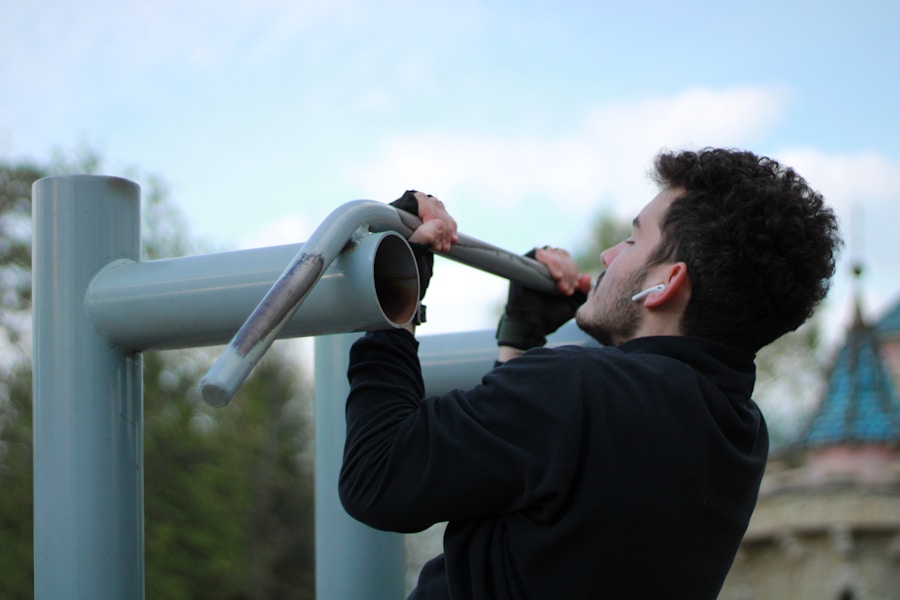A strong back is fundamental to overall physical health and performance. The back comprises a complex network of muscles, including the latissimus dorsi, trapezius, rhomboids, and erector spinae, all of which play crucial roles in maintaining posture, supporting the spine, and facilitating movement. A well-developed back not only enhances athletic performance but also contributes to daily activities, such as lifting objects, sitting for extended periods, and even walking.
Furthermore, a strong back can help prevent injuries by providing stability and support to the spine, reducing the risk of strains and sprains. In addition to physical benefits, a strong back can also have a positive impact on mental well-being. Engaging in back-strengthening exercises can boost confidence and improve body image, as a defined back is often associated with fitness and strength.
Moreover, the act of exercising releases endorphins, which can enhance mood and reduce stress levels. Therefore, investing time in building back strength is not only beneficial for physical health but also for mental resilience.
Key Takeaways
- A strong back is crucial for overall strength and posture
- Deadlifts, pull-ups, rows, and lat pulldowns are essential for building back strength
- Proper form and technique are key to preventing injury and maximizing results
- Incorporating back exercises into your workout routine can improve overall performance
- Consistent progression and variation in back exercises are important for continued strength and definition
The Top 5 Exercises for Building Back Strength
To effectively build back strength, incorporating a variety of exercises that target different muscle groups is essential. The first exercise to consider is the deadlift, which engages multiple muscles in the back while also working the legs and core. By lifting a weighted barbell from the ground to hip level, individuals can develop overall strength and stability.
Proper form is crucial in this exercise to avoid injury; maintaining a neutral spine and engaging the core are key components. Another effective exercise is the bent-over row. This movement targets the upper back and helps develop thickness in the lats and rhomboids.
By bending at the hips and pulling a barbell or dumbbells towards the torso, individuals can enhance their grip strength while also improving posture. Pull-ups are also an excellent choice for building back strength; they primarily target the latissimus dorsi and require significant upper body strength. Variations such as wide-grip or chin-ups can further challenge the muscles and promote growth.
Tips for Proper Form and Technique
Maintaining proper form during back exercises is vital for maximizing effectiveness and minimizing the risk of injury. For instance, when performing deadlifts, it is important to keep the feet shoulder-width apart and ensure that the barbell remains close to the body throughout the lift. Engaging the core and keeping the back straight will help maintain balance and prevent excessive strain on the lower back.
Similarly, when executing bent-over rows, individuals should focus on hinging at the hips rather than rounding the back. Keeping the elbows close to the body during the pull will ensure that the targeted muscles are engaged effectively. For pull-ups, using a full range of motion—starting from a dead hang to chin above the bar—will maximize muscle activation.
Regularly checking form in front of a mirror or working with a trainer can provide valuable feedback and help reinforce proper technique. For more information on effective exercises for building a strong back, visit Harvard Health.
Incorporating Back Exercises into Your Workout Routine
| Back Exercise | Benefits | Recommended Sets | Recommended Reps |
|---|---|---|---|
| Deadlifts | Strengthens lower back, glutes, and hamstrings | 3-4 | 6-8 |
| Pull-ups | Builds upper back and biceps strength | 3-4 | 8-12 |
| Bent-over Rows | Targets upper back and improves posture | 3-4 | 8-10 |
| Lat Pulldowns | Strengthens upper back and improves grip strength | 3-4 | 10-12 |
Integrating back exercises into a workout routine requires careful planning to ensure balanced muscle development. It is advisable to include back exercises at least twice a week, allowing for adequate recovery time between sessions. A well-rounded routine might consist of compound movements like deadlifts and bent-over rows combined with isolation exercises such as lat pulldowns or face pulls.
Additionally, varying the order of exercises can prevent plateaus and keep workouts engaging. For example, starting with heavier compound lifts when energy levels are high can lead to better performance, while finishing with lighter isolation exercises can help target specific muscle groups for definition. Incorporating back exercises into full-body workouts or split routines can also enhance overall strength and endurance.
The Benefits of a Strong and Defined Back
The advantages of cultivating a strong and defined back extend beyond aesthetics. A robust back contributes significantly to improved posture, which can alleviate discomfort associated with prolonged sitting or standing. Good posture not only enhances physical appearance but also promotes better breathing and digestion by allowing organs to function optimally.
Moreover, a strong back supports athletic performance across various sports. Whether it’s running, swimming, or weightlifting, a well-developed back provides stability and power during movement. Additionally, individuals with strong backs often experience enhanced functional fitness, making everyday tasks easier and reducing fatigue during physical activities.
Common Mistakes to Avoid When Training Your Back
Warming Up Properly
Adequate warm-up is crucial before engaging in back exercises. Neglecting to warm up can hinder progress or lead to injury. A proper warm-up increases blood flow to the muscles and prepares them for more intense activity, reducing the risk of strains.
Mastering Proper Form
Using excessive weight without mastering proper form is another common mistake. Lifting too heavy can lead to compromised technique, increasing the likelihood of injury. It is crucial to prioritize form over weight; gradually increasing resistance as strength improves will yield better results in the long run.
Avoiding Overtraining
Failing to incorporate rest days can lead to overtraining, which may result in fatigue or burnout. It is essential to allow your muscles time to recover and rebuild, ensuring continued progress and avoiding plateaus.
Progression and Variation in Back Exercises
To continue making gains in back strength and definition, it is important to incorporate progression and variation into workouts. Progression can be achieved by gradually increasing weights or resistance levels as strength improves. For instance, if an individual can comfortably perform ten repetitions of bent-over rows with a certain weight, increasing that weight by 5-10% can provide an additional challenge.
Variation is equally important; changing up exercises or incorporating different grips can stimulate muscle growth by targeting fibers in new ways. For example, alternating between wide-grip and close-grip pull-ups can engage different parts of the latissimus dorsi. Additionally, incorporating resistance bands or cables can add variety while providing constant tension throughout movements.
How to Maintain Back Strength and Definition Over Time
Maintaining back strength and definition requires consistency and commitment to a well-structured workout routine. Regularly revisiting foundational exercises while incorporating new variations will help prevent stagnation in progress. It is also beneficial to periodically reassess goals and adjust training plans accordingly.
In addition to regular workouts, focusing on nutrition plays a crucial role in sustaining muscle definition. Consuming adequate protein supports muscle repair and growth while maintaining a balanced diet rich in vitamins and minerals promotes overall health. Staying hydrated is equally important; water aids in recovery and helps maintain optimal performance during workouts.
By combining consistent training with proper nutrition and hydration, individuals can effectively maintain their hard-earned back strength over time.




